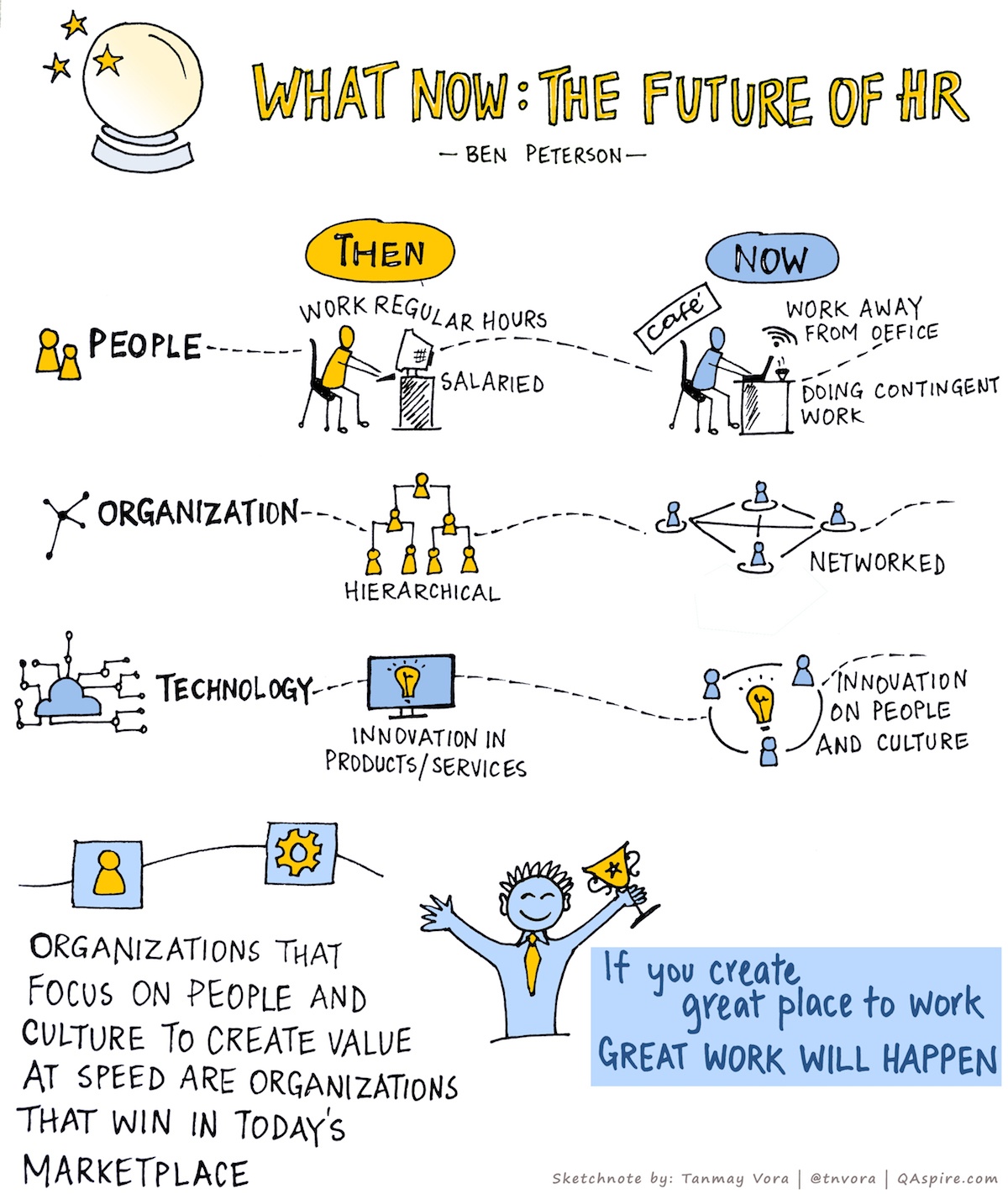What Now: The Future of HR – Part 1: People
*This blog is based on a presentation given by BambooHR CEO, Ben Peterson, at the 2017 Summit about the future of HR. In part one of this three-part series, we’ll discuss the changes happening in people and how HR can proactively manage them.
Death, taxes, and change. They’re the only certainties in life. Hopefully, in your HR role you don’t have to deal too much with death, and while you may deal a bit with taxes, they shouldn’t overwhelm your work. But change, change is something HR professionals experience a lot. One of the biggest changes we foresee coming to the workplace is a change in people.
The loyal employee who showed up at 8, stayed until 5, and stuck with the company for their entire career is a thing of the past. People are changing the way they work, where they work, and when they work. This is partially because of who makes up the majority of the workforce and partially because of advancements in online work. HR has to start strategically planning for these changes to minimize their negative impacts.
Baby Boomers
They used to make up the majority of your employees, but according to John Allen, as many as 11,000 Baby Boomers retire every day. If HR isn’t proactive, this mass exodus will walk out the door with more than just a box of belongings.
Baby Boomers will take with them the organization’s knowledge base, built over their collective careers. And don’t forget that it will cost a large chunk of cash to replace them 90-200 percent of their annual salaries.
If HR is freed up to be proactive, they can preempt the negative impacts with strategic planning. Workforce planning and projecting, as well as effective inter-office training, can reduce the impact of knowledgeable Baby Boomers making an exodus out of the office. And while it’s impossible to entirely reduce the cost of replacing a retiring employee, when recruiting is given adequate time to prepare the new position, they can hire more effectively and efficiently.
Millennials
Millennials aren’t just marching in to replace Baby Boomers; they’ve been filling in the ranks for almost a decade now. In many workplaces, Millennials now make up the majority of the workforce. While many are quick to dismiss Millennials’ different workplace needs, it’s important to always optimize for maximum engagement and performance of the entire organization—Millennials included. Currently, that’s not happening.
According to Gallup, only 29 percent of Millennials are engaged at work, leaving 71 percent who are not engaged or actively disengaged. When a large group is disengaged, organizations experience tanking productivity, hiking turnover, and low company morale.
Resist the urge to tell Millennials to “deal with it,” and instead figure out what will help them engage with their work. You might be surprised by how reasonable their requests are and how much those requests can help employees of other generations. What do Millennials want?
– Work-life balance: 75 percent said this was a key benefit they looked for when career planning
– Purpose: 60 percent say purpose was something they looked for in an employer
– Help and support: Millennials rate this as one of the most important parts of a workplace environment.
– Communication: Millennials find open and honest communication with supervisors very important.
Contingent Work
It’s not just the people who are changing. Because of the changes in types of work and the advancements in collaborative working tools, contingent work is increasingly common. Contingent work is defined as part-time, temporary, contracted, or remote employment.
Many employees like the freedom and variety allowed to them through contingent work and, luckily for the approximately 40 million independent workers in the U.S., there’s plenty of contingent work available. Because 52 percent of Millennials expect to work independently, your organization may want to consider allowing contingent work in order to capitalize on this large portion of the labor market.
Unfortunately, this can create a lot of extra work and a shift in both mindset and work practices for HR professionals. HR should prepare to help create contingent work plans in departments where it makes sense to employee contingent workers. This includes selecting and implementing collaborative work tools. Also, HR needs to be ready for an uphill recruiting battle if their organization decides against contingent work.
While changes are unavoidable, HR can still avoid the negative consequences of change through strategic planning. Work with Baby Boomers as they prepare to leave the workforce, figure out how to maximize engagement as a new generation joins, and start working to embrace non-traditional contingent workers. Doing so will help your organization roll with the punches and ensure continued success.

Get caught up every month on all things HR. Don't worry, we promise we won't spam you.









